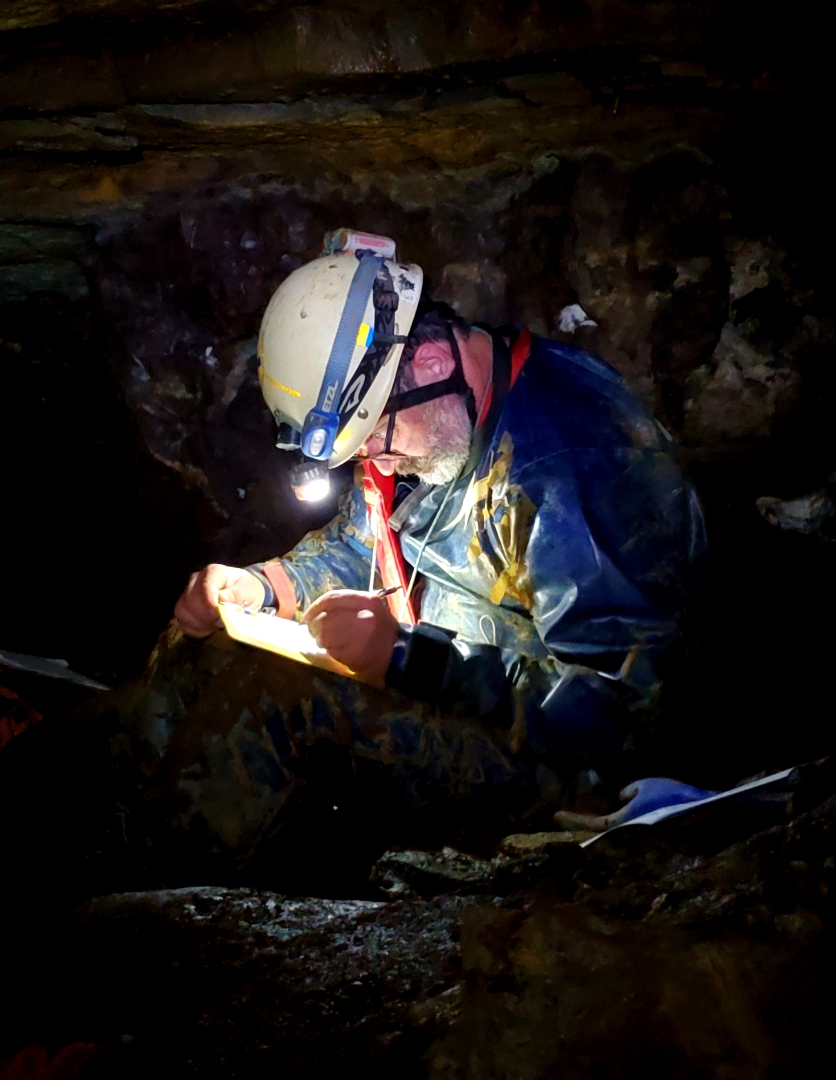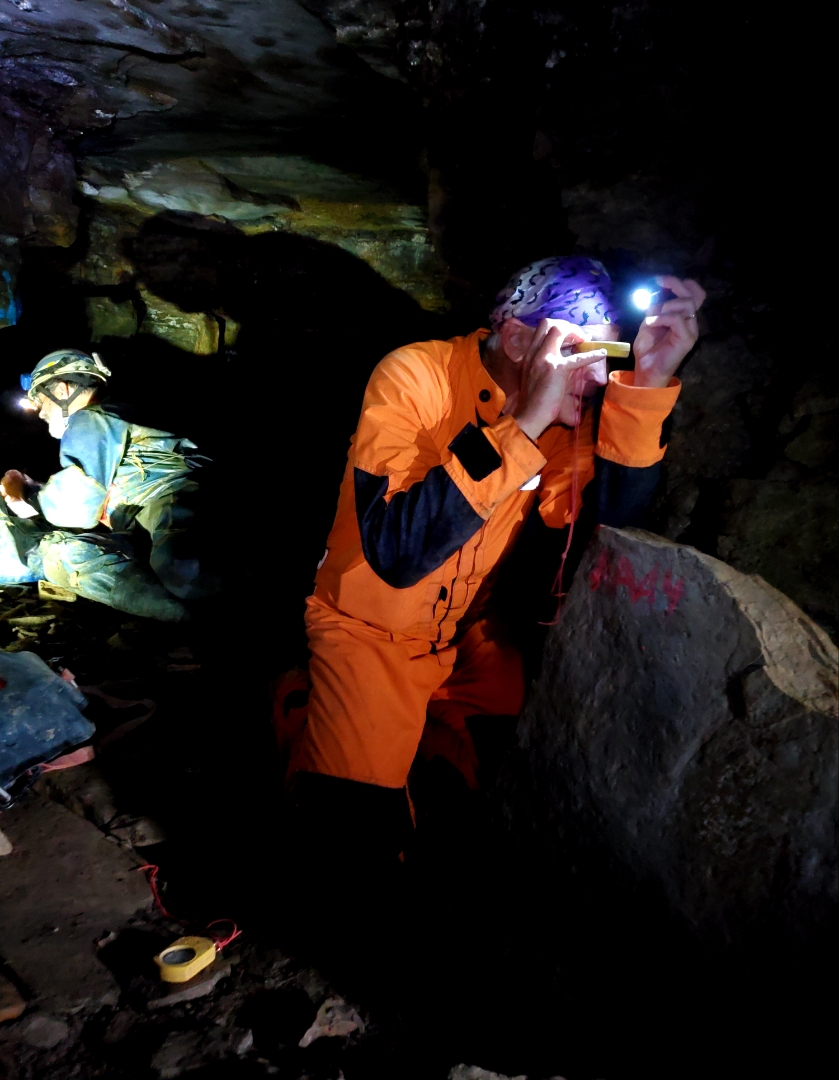By: Karen Melton, Southeastern PA Group
Photos by Kim Bissett
As a child Kim Metzgar’s grandfather forbade her from going near the cave on his property. No surprise, she grew up to be an avid caver.
Kim is a member of the Mid-Atlantic Karst Conservancy, an all-volunteer organization, and one of many such conservancies around the country. She has also been a member of the Allegheny Group of the Sierra Club for nearly 30 years and is helping to lead a cave conservation project that received a Sierra Club Huplits wildlife grant in 2019.
Karst refers to the topography that results as soluble rocks such as limestone dissolves over time to form underground sinkholes and caves. The goals of the Mid-Atlantic Karst Conservancy are ‘preserving, ensuring access to, acquiring, and managing caves and karst areas for conservation, scientific study, and recreational caving’ as well as ‘education of landowners, cavers, and the general public on the importance of karst resources and ways to preserve them.’
The Conservancy, which has a 20+ year history, owns several preserves and manages more than 5,000 acres of karstlands in the Mid-Atlantic states including more than 40 caves. It helps land-owners manage the caves on their properties to make them safely accessible to cavers, researchers and the public.


Photo on left: Kim Metzgar looks at a formation that has been broken and placed on a rock Photo on right: Bert Ashbrook recording survey data
The Barbara Schomer Preserve in Clarion County, south of the Allegheny National Forest in western PA and recipient of the Huplits award was recently acquired by the conservancy. It is a cave that had been closed to the public for a number of years, but recently became available as part of a land sale and was purchased by the conservancy.
While Pennsylvania has more than 2000 known caves and rock shelters, the Barbara Schomer Preserve is one of only four large ‘maze’ caves in the state formed in the Vanport limestone, making conservation vital. Its passages extend for miles.
The Sierra Club Huplits grant will help in the early stages of the years-long process of mapping, protecting, and making it available for exploration. The mapping is already well underway by Bert Ashbrook of Philadelphia. He has mapped nearly 1.5 miles of passages. Because the cave is so complex, the mapping is needed before the study of other features can even begin.
Mapping is done the old fashioned way -- with a tape measure and a compass. A cave map leads cavers both going in and coming back out. It provides a two-dimensional representation of an environment where understanding all three dimensions is vital, letting you know whether you are heading into a crawl space, a walk space, knee-deep mud, a sudden 4-foot drop, or a porcupine nesting area. The average ‘shot’ so far before encountering another intersection is only 6 feet.

Jeff Jahn takes a compass reading in the cave (orange suit)
It is known that several species of bats inhabited the cave around 2006, and part of the project will be to determine whether the cave is still their home. Mid-Atlantic bat populations have been decimated in the past 13 years by white-nose syndrome, a fungus that disturbs hibernating bats, causing them to awaken in the winter and subsequently starve because the insects they feed on are not available.
In addition to bats, caves are important as habitat for bears and many small mammals. According to Kim, part of the job of conservancies is to learn as much as possible about each formation, while preserving its ecology for any resident wildlife.
Support from the Huplits grant, and the mapping done to date has enabled the beginning of a fauna study; a Penn State geologist has documented unusual mineralogy; unique salamanders have been identified and will be the subject of further study; and discussions are underway with biology faculty at Clarion University about opportunities for directed student research.
You can learn more about the Mid-Atlantic Karst Conservancy at www.karst.org.
Karen Melton is Education Chair with the Southeastern PA Group and a volunteer at the Philadelphia Metro Wildlife Center.